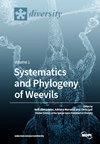一种非洲苏铁的种群结构:火可能会刺激泽米科(zamiiaceae)的圆锥体物候变化,并使其圆锥体容易受损
IF 2.1
3区 生物学
Q2 BIODIVERSITY CONSERVATION
引用次数: 0
摘要
苏铁是植物王国中最受威胁的物种。火灾被认为是加剧苏铁灭绝风险的主要因素之一。然而,与南美苏铁相比,我们对火灾对非洲苏铁种群的负面影响知之甚少。在这里,我们收集了南非已知最大种群的苏铁物种的人口统计数据快照,在未燃烧和经常燃烧的栖息地。本文拟合了几种统计模型,探讨了火灾对毛蚶种群结构的影响。首先,我们发现人口遵循“J”型结构,成年人比其他任何生命阶段都多。与普遍的看法相反,这种“J”型结构可能并不一定意味着种群的未来处于危险之中,因为E. lanatus是一个长寿的物种。其次,我们发现成虫的丰度解释了25%的幼苗丰度,但不能预测吸盘的丰度,这可能表明成虫确保了优先的幼苗而不是克隆招募。第三,无论生命的哪个阶段,易火生境的亚种群在规模上都低于未燃烧地区的亚种群,这表明火灾可能对种群的动态产生负面影响。然而,火灾与人口性别比例的差异无关;易着火的亚种群不仅有更多的锥体,而且它们的锥体也往往比未被烧毁的种群有更多的受损。总体而言,尽管我们提出了本研究的一些局限性,但我们也推断,火可能塑造了观察到的“J”型结构,但与传统观点相反,“J”型结构不足以引起人们对种群未来的关注。需要进行种群动态研究,以确定种群的未来是否处于危险之中。本文章由计算机程序翻译,如有差异,请以英文原文为准。
Population Structure of an African Cycad: Fire May Stimulate the Coning Phenology of Encephalartos lanatus (Zamiaceae) and Also Predispose Its Cones to Damage
Cycads are the most threatened group in the plant kingdom. Fire is identified as one of the major factors heightening cycad extinction risk. However, compared to South American cycads, we know little about how fire negatively affects the demography of African cycads. Here, we collected a snapshot of demographic data on the largest known population of South Africa’s cycad species, Encephalartos lanatus, in unburnt and regularly burnt habitats. We fitted several statistical models to investigate the effects of fire on the population structure of E. lanatus. First, we found that the population follows a ‘J’ structure with more adults than any other life stage. Contrary to popular belief, this ‘J’ structure may not necessarily imply the future of the population is at risk, given that E. lanatus is a long-lived species. Second, we found that the abundance of adults explains 25% of the abundance of seedlings but does not predict the abundance of suckers, perhaps suggesting the adults ensure preferential seedling rather than clonal recruitment. Third, irrespective of life stages, the subpopulation in fire-prone habitats is, in term of size, proportionately lower than the subpopulation in unburnt areas, suggesting that fire may negatively affect the dynamic of the population. However, fire is not linked to differences in sex ratio across the population; not only do fire-prone subpopulations have more cones, but they also tend to have more damaged cones than unburnt populations. Overall, although we raised some limitations of the present study, we also inferred that fire may shape the observed ‘J’ structure of the population of E. lanatus, but, contrary to traditional belief, the ‘J’ structure is not enough to raise concern about the future of the population. A population dynamics study is required to determine if the future of the population is at risk.
求助全文
通过发布文献求助,成功后即可免费获取论文全文。
去求助
来源期刊

Diversity-Basel
Environmental Science-Ecological Modeling
CiteScore
3.40
自引率
12.50%
发文量
925
审稿时长
11 weeks
期刊介绍:
Diversity (ISSN 1424-2818) is an international and interdisciplinary journal of science concerning diversity concept and application, diversity assessment and diversity preservation. It is focused on organismic and molecular diversity. It publishes reviews, regular research papers and short notes in the regular issues. Related news and announcements are also published. Our aim is to encourage scientists to publish their experimental and theoretical results in as much detail as possible. Therefore, there is no restriction on the length of the papers. Full experimental details must be provided so that the results can be reproduced.
 求助内容:
求助内容: 应助结果提醒方式:
应助结果提醒方式:


